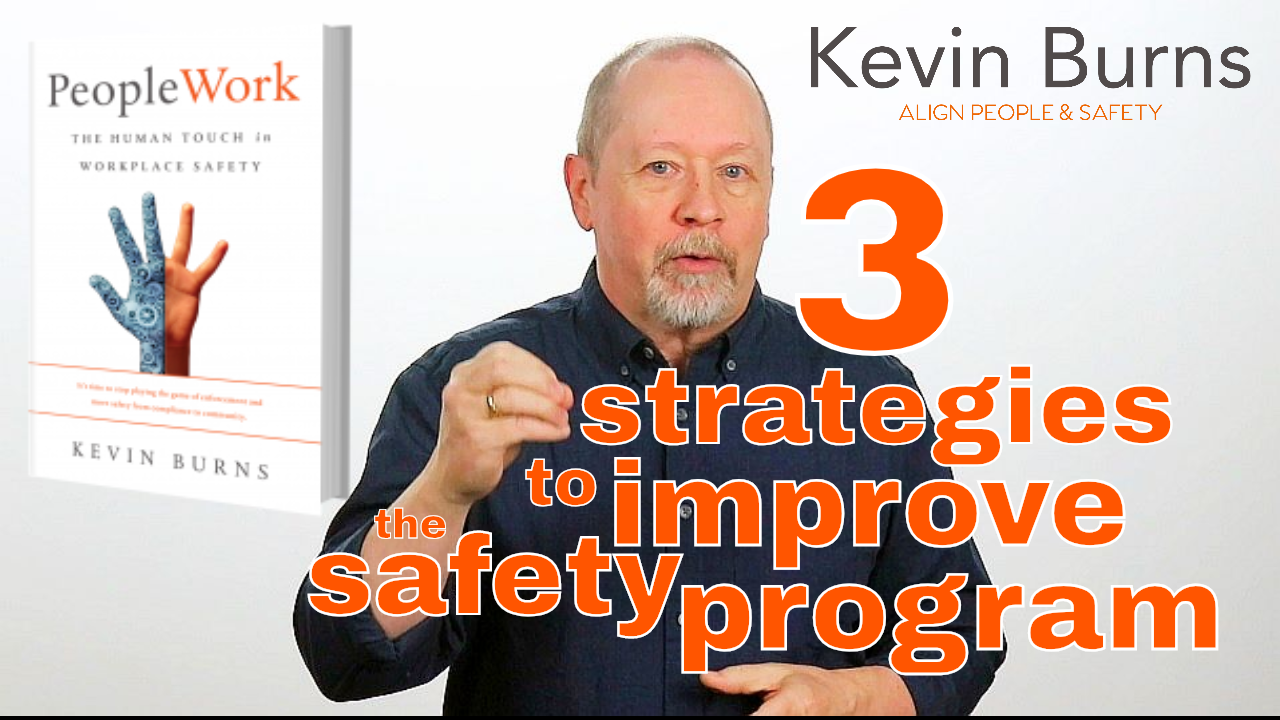If you want to get better buy-in to safety, you’re going to need to learn this one thing to make the job so much easier.
Read MoreUse This Rule to Get Buy-in to Safety
Posted by Kevin Burns on Feb 26, 2020 1:15:00 PM
3 Strategies for Safety Communications
Posted by Kevin Burns on Jan 29, 2020 1:15:00 PM
A good internal safety communications campaign can help your organization build buy-in to the safety program faster and with much less effort.
Read MoreCheck-in Safety Beats Check-box Safety
Posted by Kevin Burns on Apr 17, 2019 1:07:00 PM
You may cover the check-boxes but you need to ensure employees are going to give safety their attention and focus.
Is yours a check-box safety culture? Or a check-in safety culture? What’s the difference? A check-box safety culture is just what the name implies. You go through the checklists and check off the items that you have completed.
Read MoreSafety Conversations Beat Statements
Posted by Kevin Burns on Apr 3, 2019 1:18:21 PM
Have you fallen into the trap of making statements instead of asking questions?
Selling safety to crews can seem overwhelming. Getting your people to see and understand what you see and understand can be frustrating, especially when you don’t achieve the success you think you should have.
Read MoreHow to Sell Safety Effectively
Posted by Kevin Burns on Mar 13, 2019 1:04:55 PM
Why fixing "safety" frustrates you
Posted by Kevin Burns on Feb 13, 2019 1:07:00 PM
Asking people to think safety doesn’t help; it makes the frustration feel worse.
What part of safety do you want to fix? You will have a problem answering that question specifically. It will frustrate you that you cannot seem to articulate the exact part of safety that you want to fix. And if you feel some frustration, you will better understand why your people have a difficult time also fixing safety, or even rallying around it.
Read MoreHow to Convince Employees of Safety
Posted by Kevin Burns on Jan 30, 2019 1:07:00 PM
By implementing an internal marketing strategy for safety, employees are treated as critical stakeholders who must be convinced of a company's safety vision.
To get employees to buy-in to safety, you need a consistent and compelling message that resonates with your people. And, to be clear, a compelling message is not some safety slogan you downloaded from the Internet. Don’t just take something you think is clever that someone else came up with and turn it into posters all over your workplace. You’ve got to understand what resonates with your team.
Read MoreHow to Follow-up Your Safety Stand-down
Posted by Kevin Burns on Jan 16, 2019 1:07:00 PM
You need the right message, at the right time, to the right people so that every employee is working toward common goals in safety.
You’re planning a safety stand-down, safety event, safety day, whatever you want to call it. I’ll stick with stand-down. So, you’ve set aside your dates, got a budget from your senior managers and you’re busy making plans for what you are going to do for your stand-down. Now, before you plan any further, I want to pass along some advice that will make your stand-down be much more effective.
Read More6 Key Parts of Improving Safety Culture
Posted by Kevin Burns on Dec 12, 2018 1:07:00 PM
What employees want from the job can change your culture.
In my last post (When Employees Don't Give You Safety Performance), I presented an overview of what employees want from their supervisors and immediate managers. This time around, we are going to take a look at what employees want from their jobs. Because if they don’t get what they want from their job, why would you expect them to give their best effort, especially in safety?
Read More3 Strategies to Improve Your Safety Program
Posted by Kevin Burns on Nov 21, 2018 1:07:00 PM
Effective workplaces are those places where employees feel valued, cared for and protected.
Without getting into long descriptions, good workplace safety culture is the result of attitudes and personal and corporate values aligning. If apathy in the workplace exists, little care will be given to safety. When the quality of the work is “good enough,” apathy in safety exists. If employees think it's a lousy place to work, then safety will take a back seat. Poor safety attitudes will impede becoming a top performer. That reflects in both safety and financial performance. A broken safety culture will have an impact on overall corporate performance.
Read More











